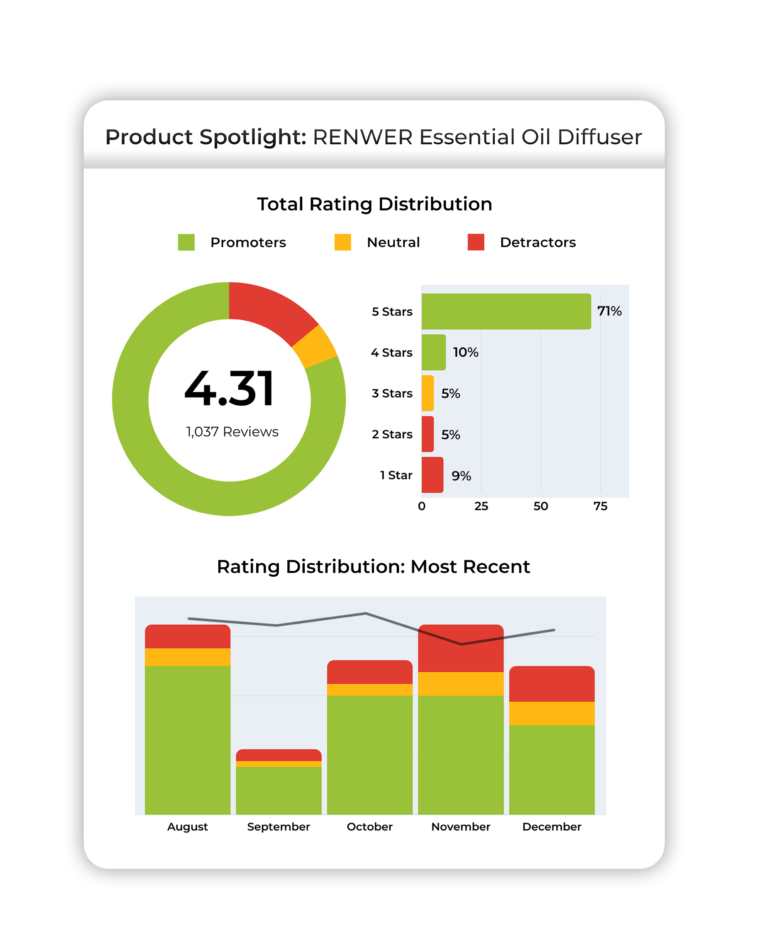Power Points
-
When collecting and displaying reviews, financial services companies have to be more thoughtful of industry regulations and privacy laws.
-
Despite these limitations, financial services companies have a number of creative options for collecting, displaying, and leveraging reviews throughout their marketing.
-
With strategic use of ratings and reviews, financial services brands can boost traffic, increase engagement, and convert more customers.
In financial services, marketers have unique limitations on how they can promote their services to clients and leverage user-generated content while still staying on the right side of privacy laws and industry regulations.
Consider the following:
- Customers who interact with ratings and reviews are 120% more likely to convert than those who don’t.
- Reviews have the single-highest impact on whether a customer decides to convert, even more so than price and brand.
- With more reviews, comes more conversions. Pages with just a single review experience a 52% conversion lift compared to a page with no review. Pages with over 100 reviews experience a 251% conversion lift.
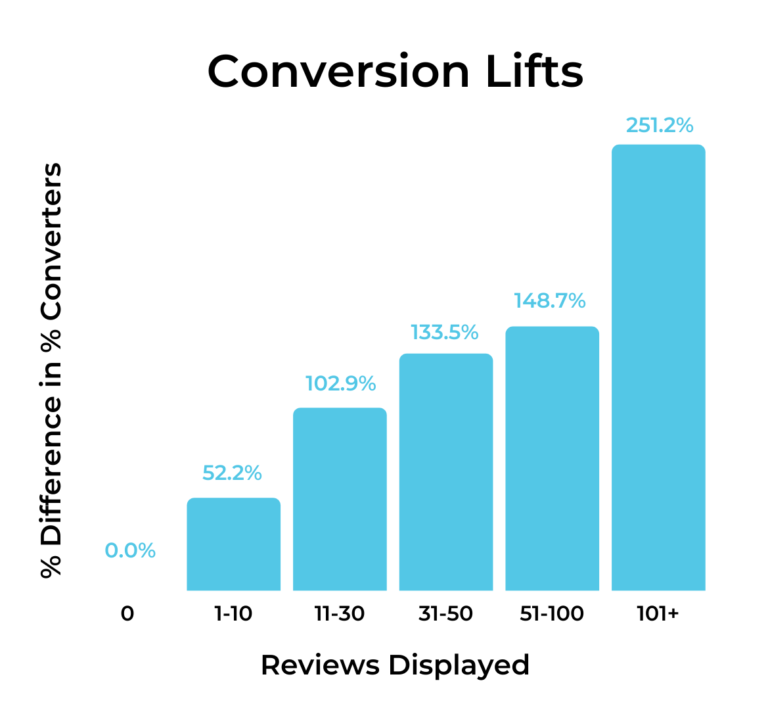
Clearly, reviews are important for driving desired outcomes online and especially in ecommerce— but you already knew that. But how can YOU – as a financial services company – leverage this content?
Read on as we share ideas and best practices for financial services companies to collect, display, and leverage reviews throughout their marketing.
Collecting Reviews
To enjoy the benefits of reviews, you first need to collect them. Here are three proven tactics financial services companies can use to generate reviews.
1. Request reviews via email
Between 60% to 90% of all reviews come from an email request. Email is the singlehanded best way to collect reviews from customers.
All you need is a simple branded email with a CTA to leave a review. Encourage customers to share their experience to help future customers.
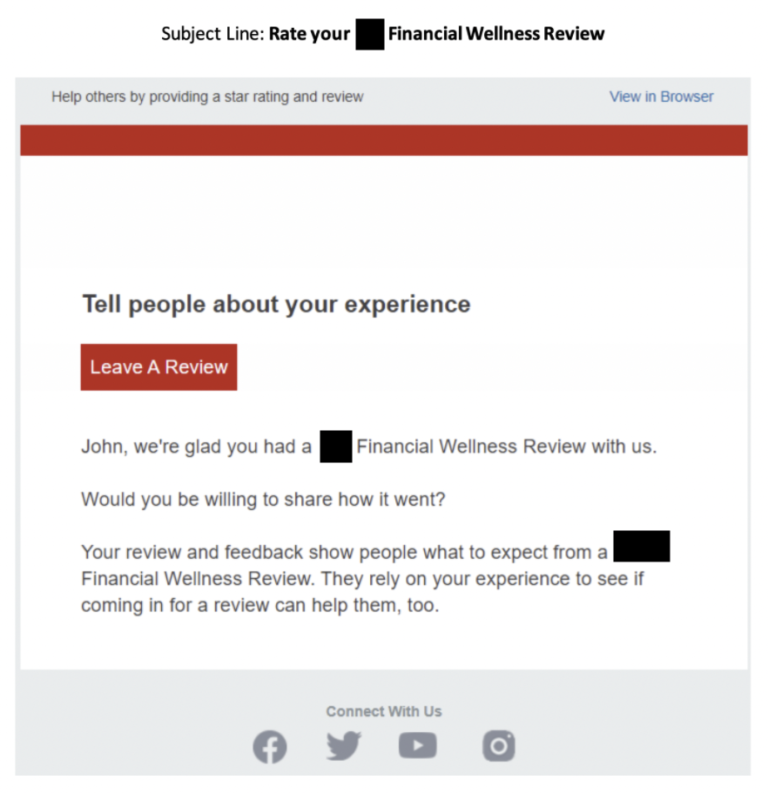
Emailing customers a review request can lift your review volumes instantly, and significantly — one PowerReviews customer saw a 1,000% increase in review collection within a month of implementing email requests.
2. Ask for reviews at key customer touchpoints
The feedback people share in a review can provide valuable insights for your company. Send out an email with a link to your review form after customers:
- Meet with an account representative
- Open a new account or loan
- Open a new credit card
- Complete an application online
- Visit one of your banking centers
3. Customize your review form
Reviews are unlikely to be one-size-fits-all. Consider what customizations you can make to the standard review form to make the information more useful for potential customers — and make it easier for people to write a more detailed review. Our research shows longer reviews receive more engagement:

For example, you might ask reviewers to provide ratings for your banking app or customer service team, in addition to an overall rating. You could also ask them to pick their favorite benefit offered by your credit card, banking account, or insurance policy:
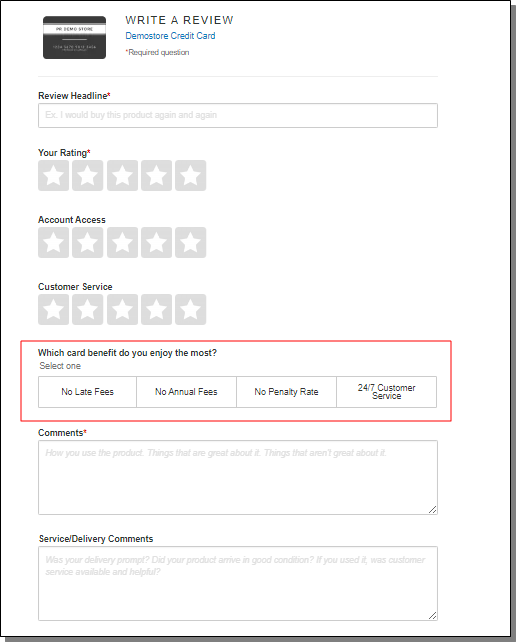
Then, on your Review Display front-of-site, this additional information can appear alongside their review, giving site visitors and potential customers more information to consider.
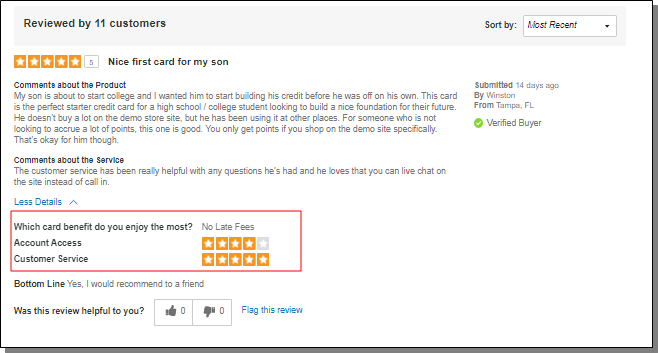
Displaying Reviews
Future customers want to know what it’s like to work with your customer service agents, or get approved for a home loan or credit card. Give them the inside scoop with these creative ideas for displaying reviews.
4. Include star ratings on product landing pages
Build consumer trust instantly by featuring overall star ratings and review count at the top of your product landing pages. You can also include a stat of how many people would recommend your product or service to a friend:
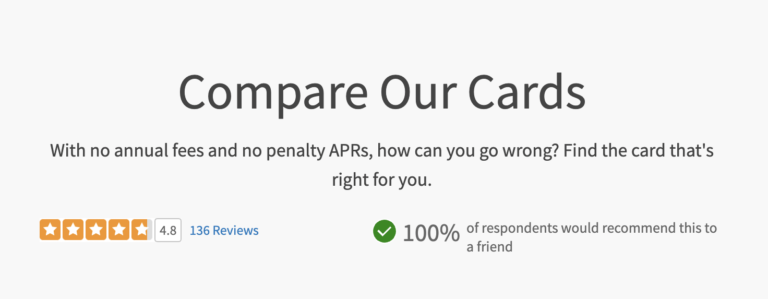

5. Include a review snapshot
At the bottom of your service landing page, you can display all your reviews. Make the information easy to consume by including a Review Snapshot at the top. This includes:
- Overall star rating
- Overall review count
- Ratings distribution
- Pros
- Cons
- Most liked positive and negative review
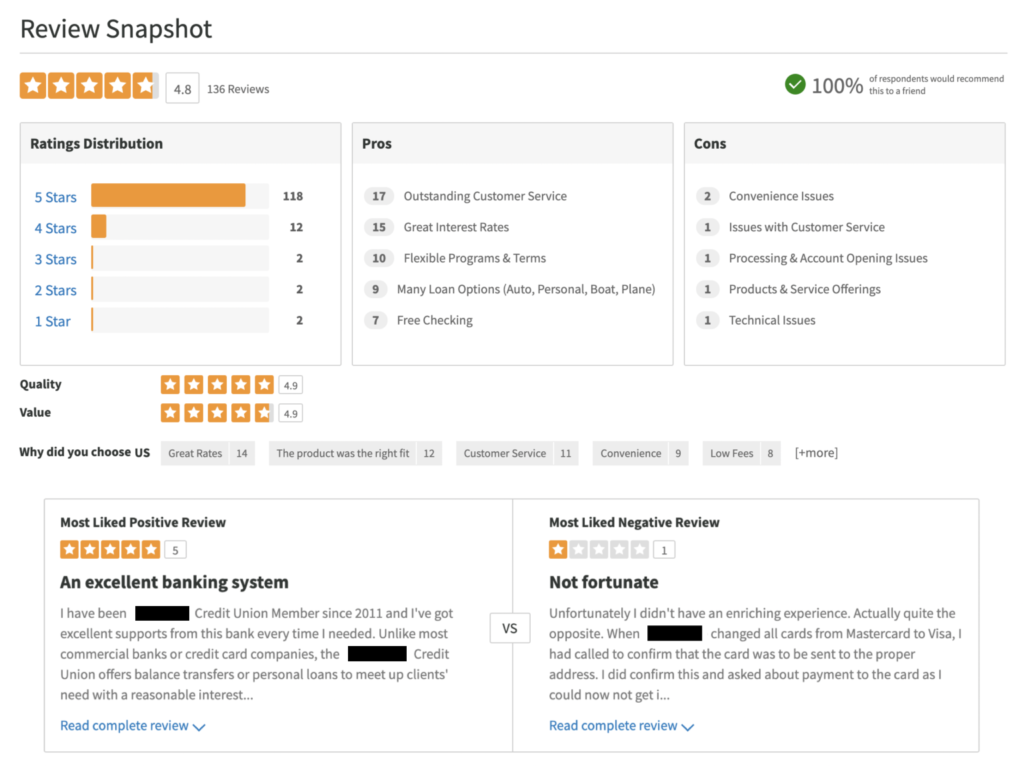
This kind of transparency builds trust with consumers. Even the Cons list, which features common customer complaints about credit cards, reassures customers by showing the small number of reviewers who listed it as a con.
6. Add search and filter functionality to your reviews
The Review Snapshot gives customers all the info they need at a glance. But any financial decision, whether it’s opening a new checking account or applying for a car loan, requires careful consideration. Make the research process easier for customers by letting them search and filter to find reviews from people like them, who share similar pain points.
For example, with the PowerReviews Review Display, the tags in the Pros and Cons lists are all searchable, so customers can simply click one to see all the reviews that mention “Great Interest Rates.”
You can also let people enter their own search terms, like “phone support,” to find what they need. Finally, invite customers to filter to see only reviews from those who opened the same credit card or loan product that they’re considering.
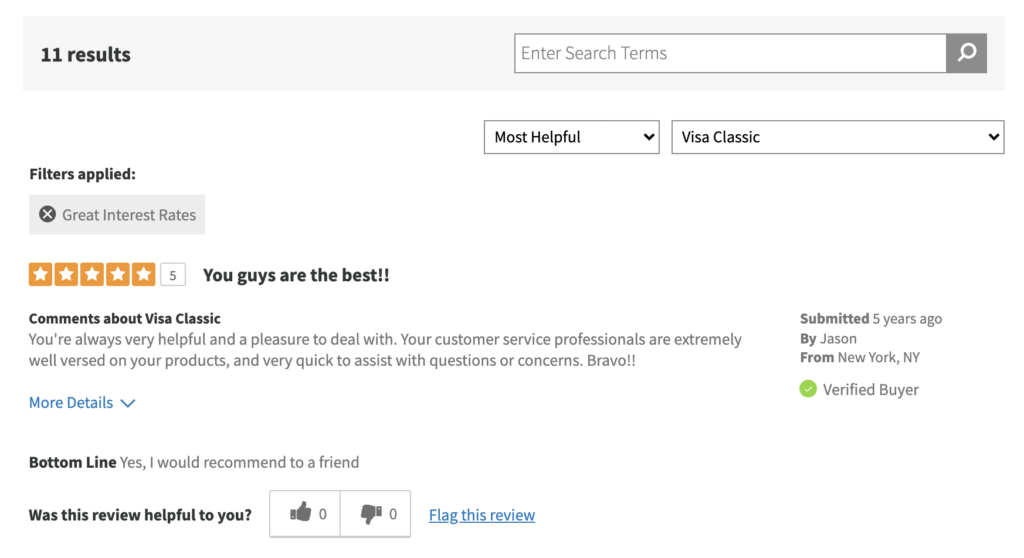
7. Include star ratings on category pages
If you offer multiple credit cards or coverage options, consider adding reviews to your category landing pages. These review snippets share a key message instantly: customers can trust your products.
A high star rating, combined with a high review count, conveys to customers that dozens, hundreds, or even thousands of people like them have had a positive experience.
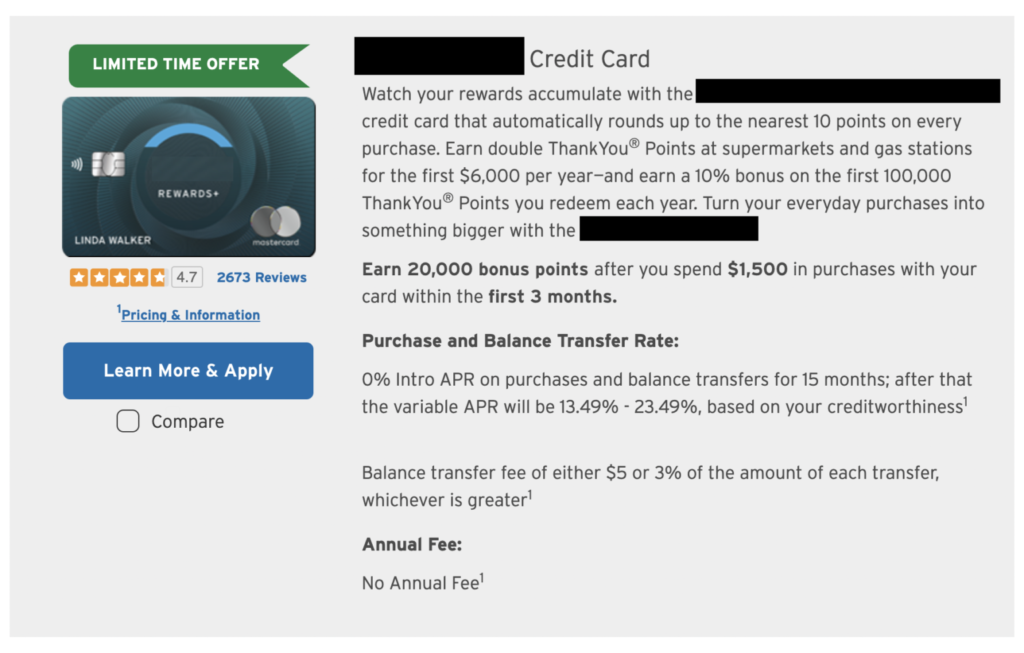
8. Create a separate page just for reviews
Want to use reviews in an email or advertising campaign? Set up a dedicated landing page that features your reviews.
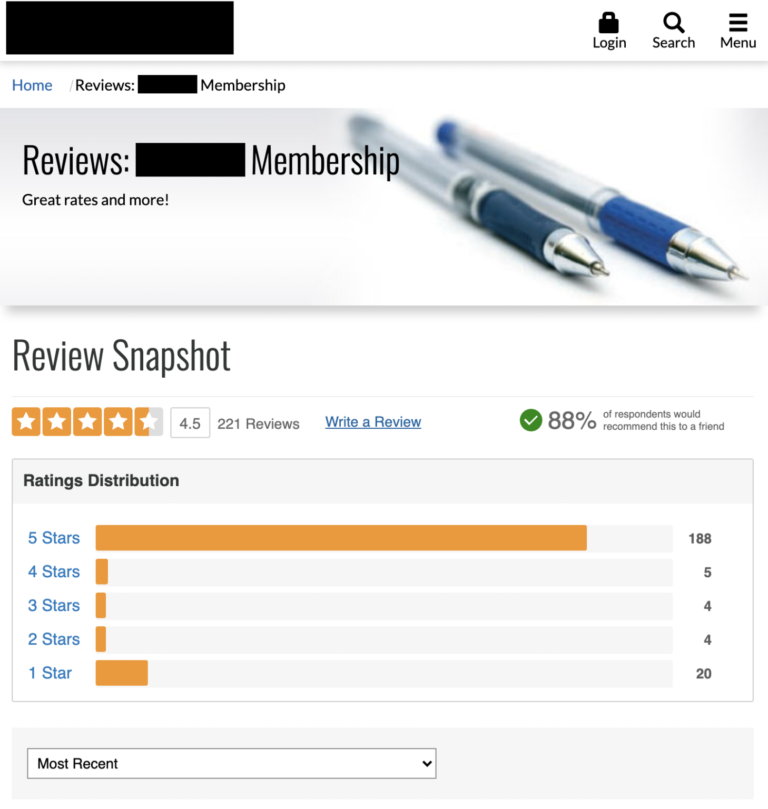
Leveraging Reviews
Reviews don’t have to be siloed to your landing pages. Here are seven ways financial services brands can leverage reviews across their website, SEO, social media, and other channels.
9. Use reviews as customer testimonials on your homepage
Adding reviews to your homepage can boost consumer confidence in your service.
You can even curate reviews related to a specific customer pain point. For example, an insurance provider may showcase reviews of their customer service and claims process on the homepage, relieving concerns about the speed of the process:
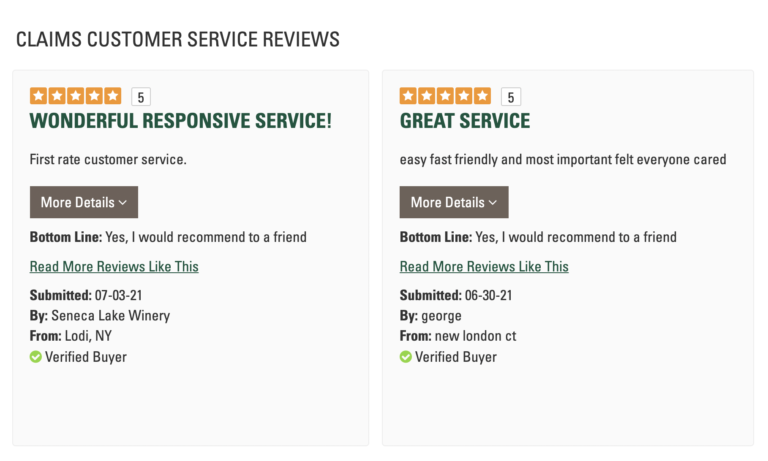
10. Syndicate your reviews
It’s common for retail brands to syndicate their reviews to all of their third-party sellers. If your insurance agents and partners operate their own websites, you can do the same. Syndicate reviews you collect on your website to those of the individual agents mentioned in the review.
You can also feature review ratings in a provider locator tool, if you collect reviews on individual agents or office locations. Learn more about review syndication here.
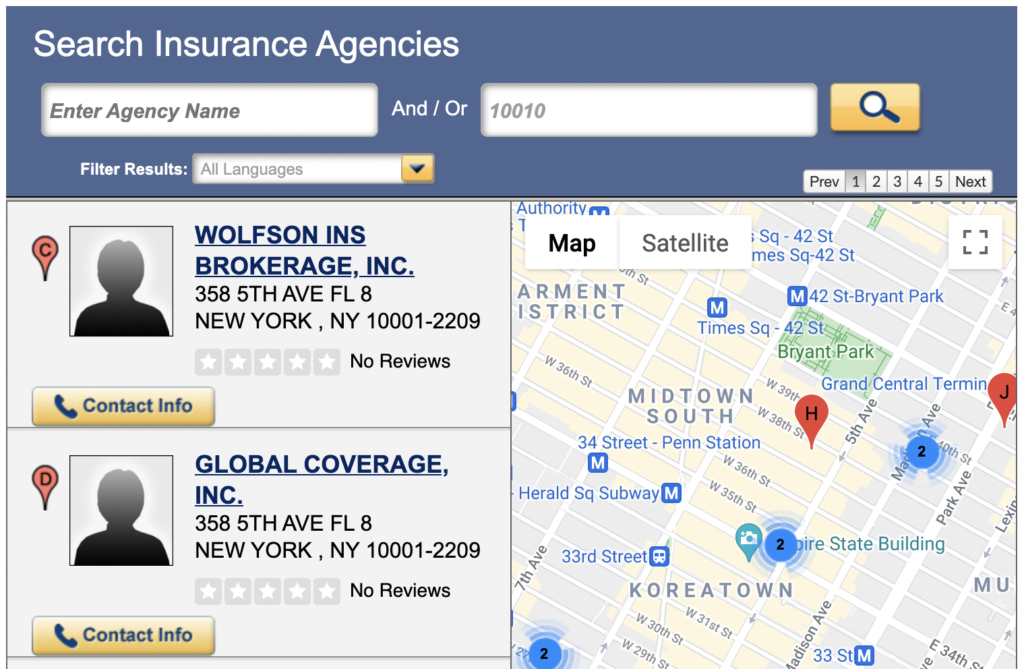
11. Boost your SEO
When brands add reviews to their product page, they enjoy an average traffic increase of 108%. By adding reviews to your service landing pages, you (by way of your reviewers) provide Google with a fresh stream of keyword-rich content related to your service.
For example, a car loans page will have reviews that include keywords like “better rate,” “refinancing,” “vehicle,” “online auto loan application,” and more.
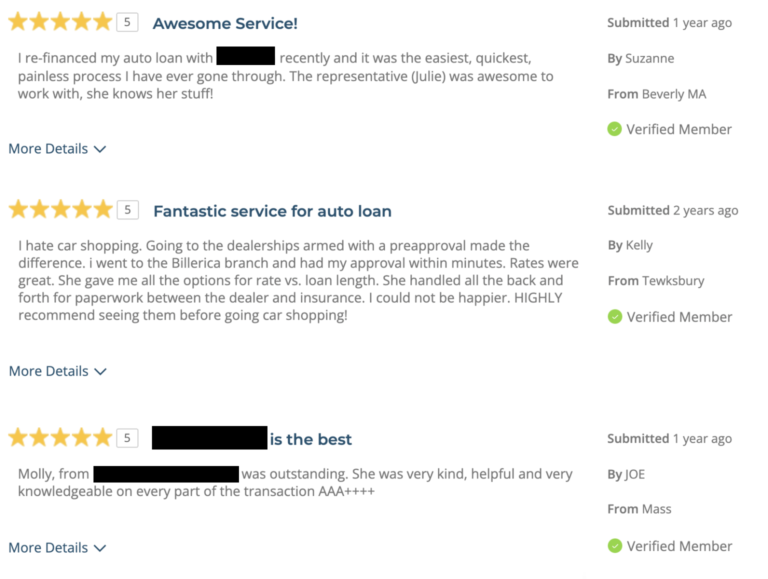
You can also enable product schema for these pages, which adds star ratings to your Google results. These stars help your website stand out in the search results, which leads to increased traffic.

12. Highlight reviews on social media
Is your social media team running into writer’s block? Encourage them to use reviews to create custom graphics. They’ll never run out of content again!

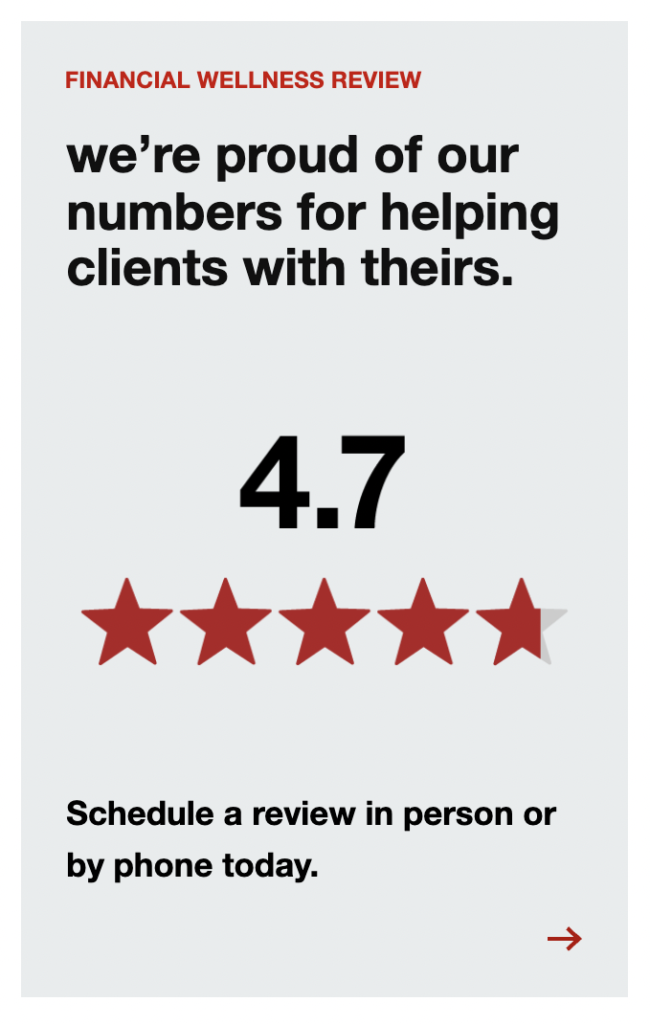
13. Use reviews to amplify hiring efforts
Reviews can even help out your HR team. By showcasing positive reviews on your Careers page, you can help job applicants get inspired to work for a company that makes a difference.

14. Feature reviews in your TV commercials and other media
Reviews can also be used to make your television commercials more impactful. Include an overall star rating, approval score, or short phrases from positive reviews.

Analyzing Reviews
Ready to power up your reviews? Analyze them. By analyzing your reviews, you can discover insights that apply to other parts of your business, from marketing operations to customer support.
15. Use reviews as keyword research
With PowerReviews Review Search Reporting, you can see the specific search terms people are looking for in your reviews. These often suggest key customer concerns and pain points, which you can address by including them in the rest of your marketing materials.
For example, if keywords like “roadside” or “roadside assistance” keep coming up for an auto insurance provider, they may want to speak to those benefits in more detail on their product page.
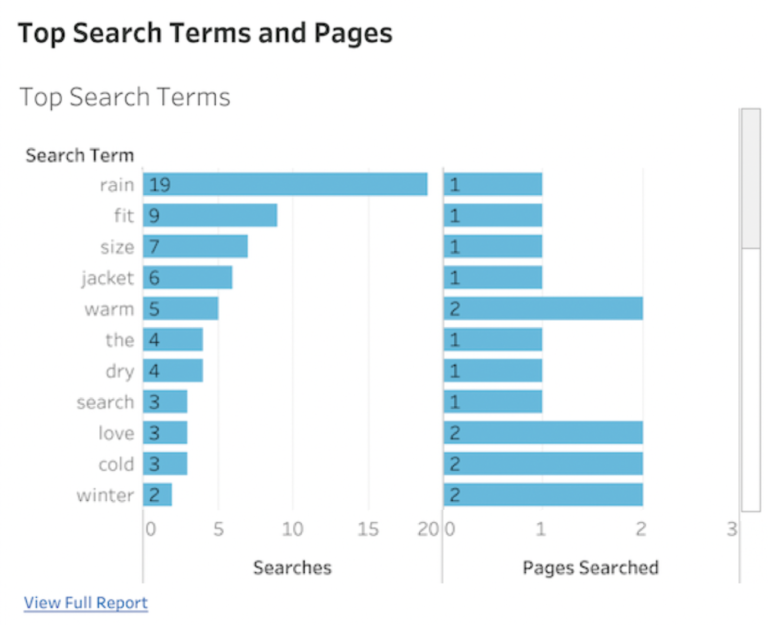
16. Gauge customer sentiment
Ever wonder how customers are feeling about your services? Supplement your surveys with Product Sentiment Analytics from PowerReviews. This data reveals how customers feel about your service offerings, and charts customer sentiment over time. Notice a big drop in your ratings? You can investigate what happened and fix it.
Whether someone is opening a new bank account, applying for a credit card, or purchasing business insurance, ratings and reviews are extremely important to the buyer journey. Use the tips above to get more value from your customer reviews, and convert more customers.
